2024年的日行迹
See Explanation. Clicking on the picture will download the highest resolution version available.
请参阅说明。单击图片将下载可用的最高分辨率版本。

See Explanation. Clicking on the picture will download the highest resolution version available.
请参阅说明。单击图片将下载可用的最高分辨率版本。

2023年9月23日 Afternoon Analemma Image Credit & Copyright: Ian Griffin (Otago Museum) Explanation: An analemma is that figure-8 curve you get when you mark the position of the Sun at the same time each day for one year. To make this one, a 4×5 pinhole camera was set up looking north in southern New Zealand skies. The shutter was briefly opened each clear day in the afternoon at 4pm local time exposing the same photosensitized glass plate for the year spanning September 23, 2022 to September 19, 2023. On two days, the winter and summer solstices, the shutter was opened again 15 minutes after the main exposure and remained open until sunset to create the sun trails at the bottom and top of the curve. The…
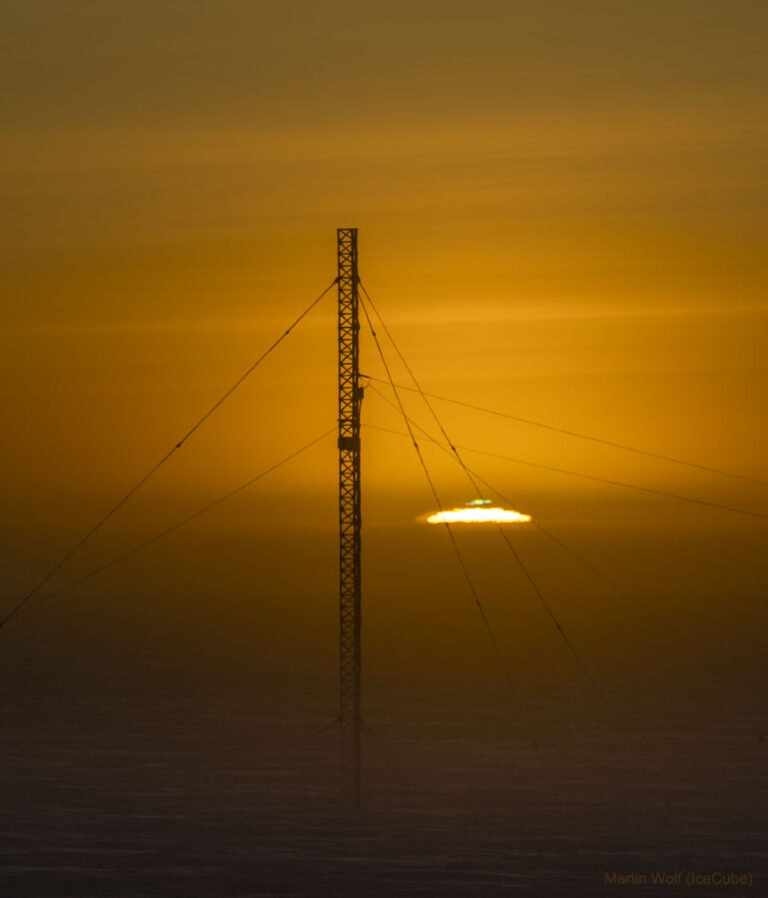
2021年10月5日 Sunrise at the South Pole Image Credit & Copyright: Martin Wolf (U. Wisconsin), IceCube Neutrino Obs., NSF; ht: Alice Allen Explanation: Sunrise at the South Pole is different. Usually a welcome sight, it follows months of darkness — and begins months of sunshine. At Earth’s poles, it can take weeks for the Sun to rise, in contrast with hours at any mid-latitude location. Sunrise at a pole is caused by the tilt of the Earth as it orbits the Sun, not by the rotation of the Earth. Although at a pole, an airless Earth would first see first Sun at an equinox, the lensing effect of the Earth’s atmosphere and the size of the solar disk causes the top of the Sun to appear…
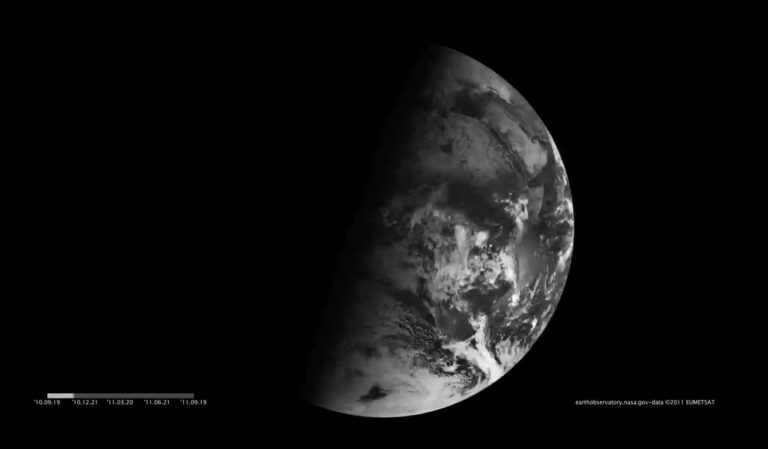
2021年9月22日 Equinox on a Spinning Earth Image Credit: Meteosat 9, NASA, earthobservatory, Robert Simmon Explanation: When does the line between night and day become vertical? Today. Today is an equinox on planet Earth, a time of year when day and night are most nearly equal. At an equinox, the Earth’s terminator — the dividing line between day and night — becomes vertical and connects the north and south poles. The featured time-lapse video demonstrates this by displaying an entire year on planet Earth in twelve seconds. From geosynchronous orbit, the Meteosat 9 satellite recorded these infrared images of the Earth every day at the same local time. The video started at the September 2010 equinox with the terminator line being vertical. As the Earth revolved…
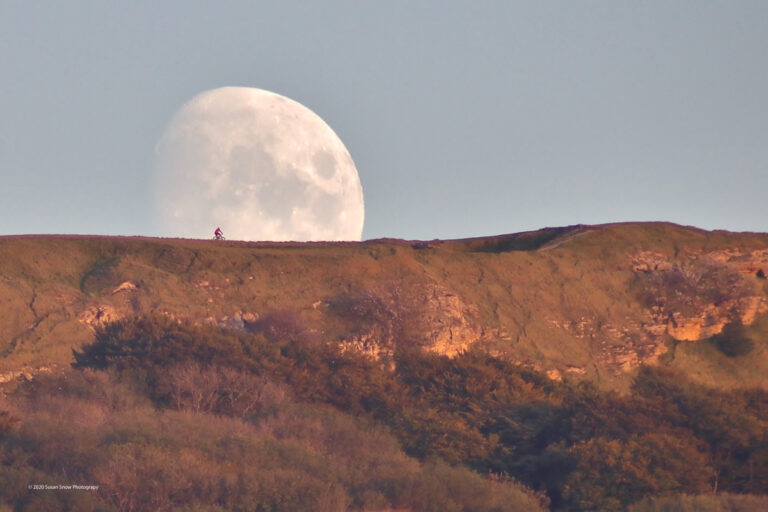
2020年10月02日 Biking to the Moon Image Credit & Copyright: Susan Snow Explanation: As you watched October’s first Full Moon rise last night, the Full Moon closest to the northern autumnal equinox, you were probably asking yourself, “How long would it take to bike to the Moon?” Sure, Apollo 11 astronauts made the trip in 1969, from launch to Moon landing, in about 103 hours or 4.3 days. But the Moon is 400,000 kilometers away. This year, the top bike riders in planet Earth’s well-known Tour de France race covered almost 3,500 kilometers in 21 stages after about 87 hours on the road. That gives an average speed of about 40 kilometers per hour and a lunar cycling travel time of 10,000 hours, a little over…
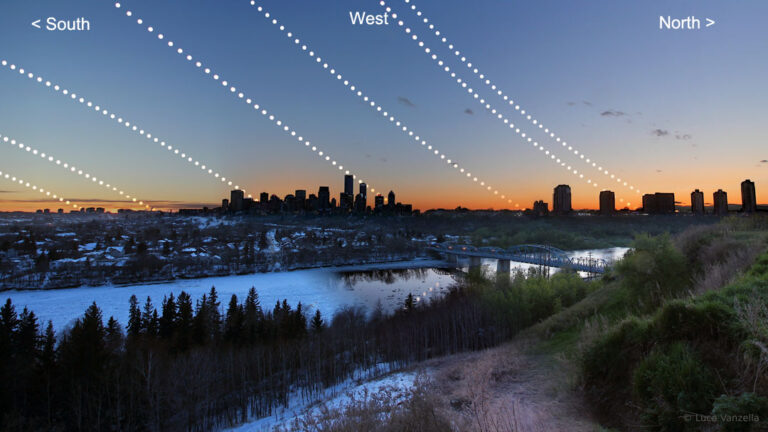
2020年9月22日 Equinox in the Sky Image Credit & Copyright: Luca Vanzella Explanation: Does the Sun set in the same direction every day? No, the direction of sunset depends on the time of the year. Although the Sun always sets approximately toward the west, on an equinox like today the Sun sets directly toward the west. After today’s September equinox, the Sun will set increasingly toward the southwest, reaching its maximum displacement at the December solstice. Before today’s September equinox, the Sun had set toward the northwest, reaching its maximum displacement at the June solstice. The featured time-lapse image shows seven bands of the Sun setting one day each month from 2019 December through 2020 June. These image sequences were taken from Alberta, Canada — well…
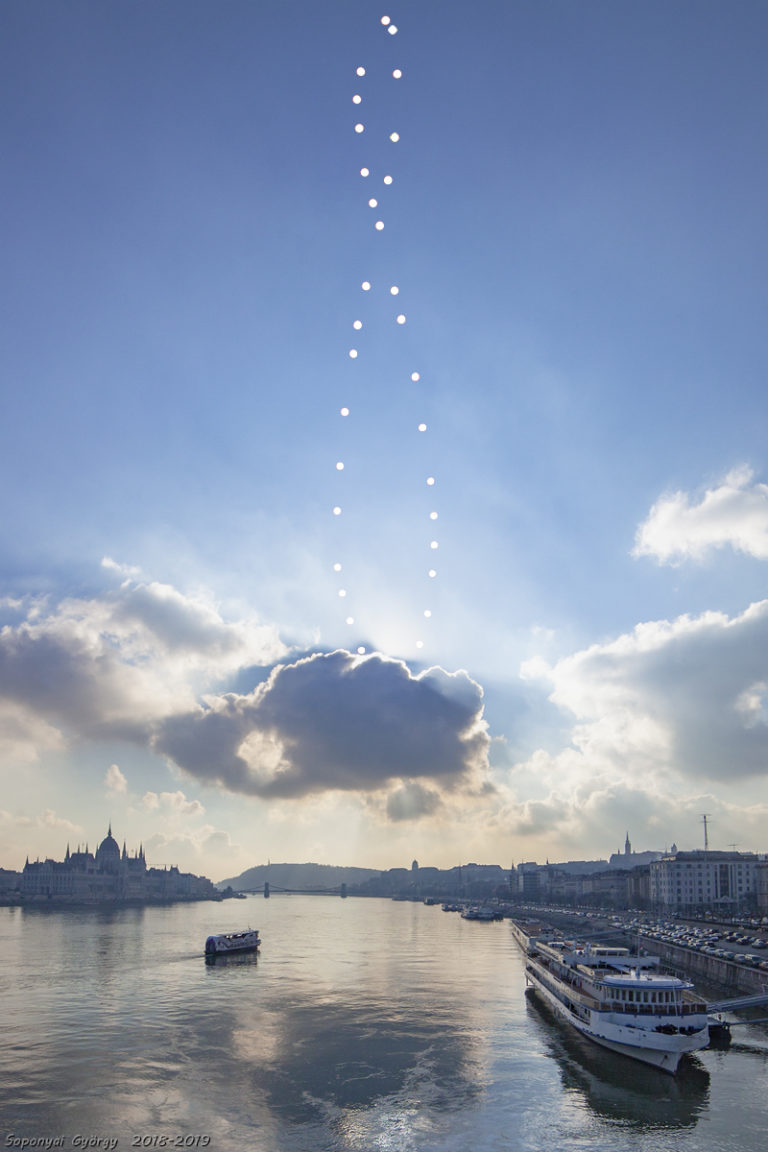
2019 September 28 An Analemma of the Sun Image Credit & Copyright: Gyorgy Soponyai Explanation: This week the equinox found the Sun near the middle, but not at the crossing point, of an analemma in its annual trek through planet Earth’s skies. In this scenic view, that graceful, figure-8-shaped curve was intentionally posed above the iconic Danube River and the capital city of Hungary. Looking south from Budapest’s Margaret Bridge it combines digital frames taken at exactly the same time of day (11:44 CET) on dates between 2018 September 24 and 2019 September 15. That puts the metropolitan Pest on the left, regal Buda on the right, and the positions of the Sun on the solstice dates at the top and bottom of the analemma…